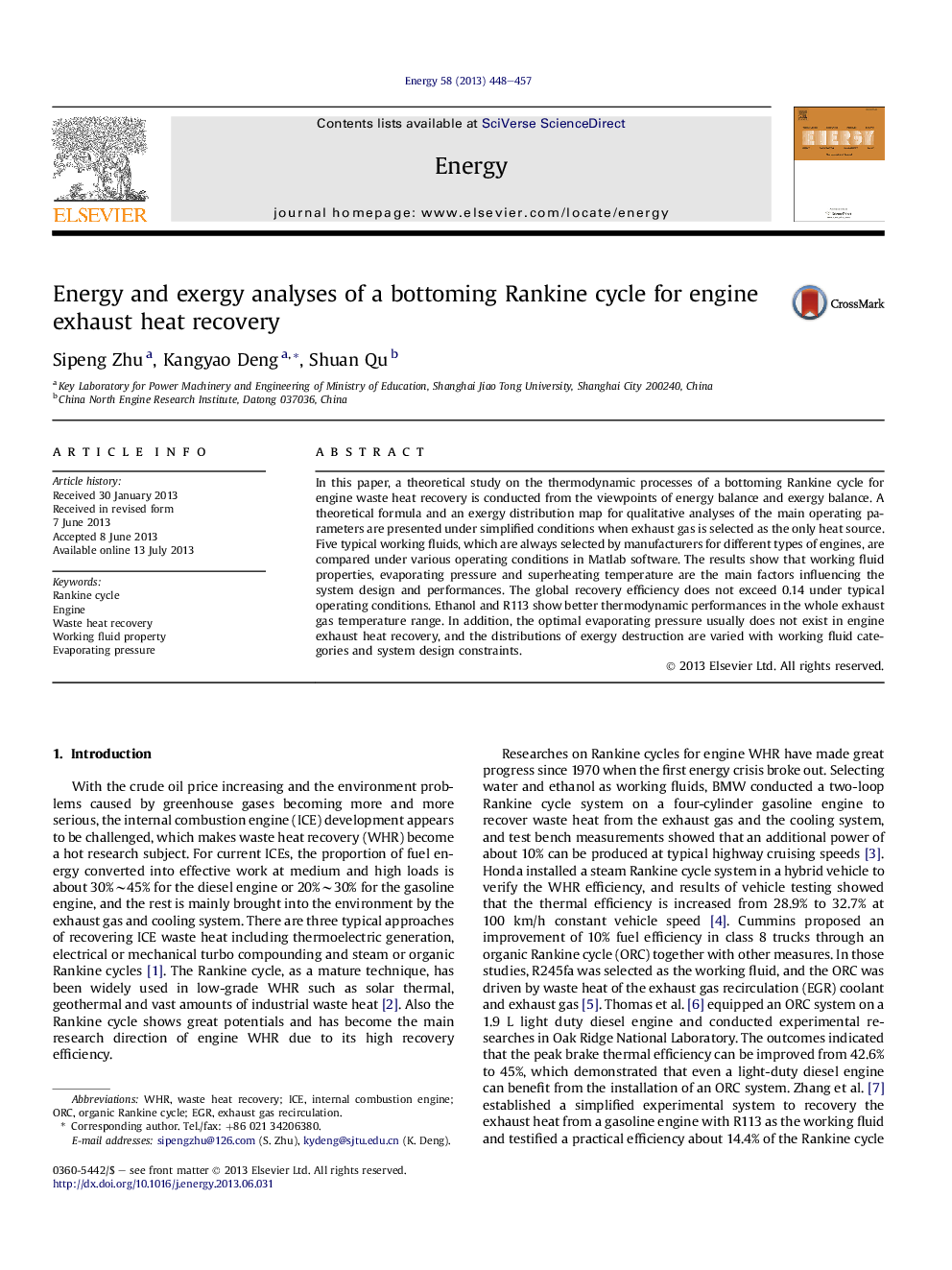| Article ID | Journal | Published Year | Pages | File Type |
|---|---|---|---|---|
| 1732906 | Energy | 2013 | 10 Pages |
•A theoretical formula for qualitative analyses of the Rankine cycle is proposed.•System exergy destruction is investigated with an exergy distribution map.•Design constraints of the bottoming Rankine cycle for ICEs are summarized.•The optimal evaporating pressure does not occur under typical exhaust conditions.•The exergy destruction depends on working fluid categories and system constraints.
In this paper, a theoretical study on the thermodynamic processes of a bottoming Rankine cycle for engine waste heat recovery is conducted from the viewpoints of energy balance and exergy balance. A theoretical formula and an exergy distribution map for qualitative analyses of the main operating parameters are presented under simplified conditions when exhaust gas is selected as the only heat source. Five typical working fluids, which are always selected by manufacturers for different types of engines, are compared under various operating conditions in Matlab software. The results show that working fluid properties, evaporating pressure and superheating temperature are the main factors influencing the system design and performances. The global recovery efficiency does not exceed 0.14 under typical operating conditions. Ethanol and R113 show better thermodynamic performances in the whole exhaust gas temperature range. In addition, the optimal evaporating pressure usually does not exist in engine exhaust heat recovery, and the distributions of exergy destruction are varied with working fluid categories and system design constraints.
